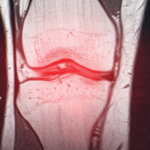Macrophages Evaluated
Work similar to that of the AMP projects is also being done around the world, and Dr. Bingham summarized important findings from a study in Europe in which 45 treatment-naive patients with active RA, 31 patients with treatment-resistant active RA, 36 patients with sustained clinical and ultrasound remission of RA, and 10 healthy controls were evaluated.2 Of the patients in remission, 22 were tapered off biologic treatment and half were then assessed at time of flare and the other half were assessed at time of no flare. The investigators evaluated macrophage populations using single cell RNA sequencing, multi-parameter flow cytometry and immunofluorescence staining.
The authors found that certain macrophage types in the synovial lining layer are lost during flares and regained during periods of remission. Moreover, these cells were noted to have higher production of resolvins and IL-10, suggesting the role of these cells may be in inflammation and repair of tissue.
The significance of these findings, Dr. Bingham explained, is that we are learning that different cell types are found in different locations with distinct functions at various stages of rheumatoid arthritis. This information may be revealing in terms of what types of cells are being produced at different time points of disease, and one could imagine how, in the future, such data may be used to guide targeted treatment for individual patients at varying points in the disease process.
The Future Is Not Far Off
Indeed, the future is not far off, as shown in a 2021 paper that Dr. Bingham discussed in detail. In this study, the authors evaluated patients with RA who had an inadequate response to tumor necrosis factor (TNF) inhibitor therapy.3 These patients underwent synovial biopsy at baseline, and this biopsy was histologically classified as either B cell rich or B cell poor. The biopsies were also subjected to RNA sequencing and reclassified by B cell molecular signature. The patients were then randomized to receive either tocilizumab or rituximab.
The study was designed to test for superiority of tocilizumab over rituximab therapy in the patients with B cell poor synovial biopsies, and the primary endpoint was 50% improvement in the Clinical Disease Activity Index (CDAI 50%) from baseline.
When the groups of patients were classified as B cell poor based on biopsy histology, no significant difference was seen in CDAI 50% response between the tocilizumab and rituximab groups. However, when the groups of patients were classified as B cell poor based on biopsy RNA sequencing, the patients receiving tocilizumab had significantly higher CDAI 50%, compared with the group receiving rituximab (63% vs. 36%, P=0.035).

